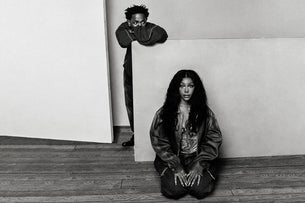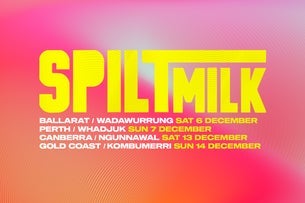Kendrick Lamar's 'DAMN.' Is So Bulletproof It Even Survives The Inclusion Of U2
"If To Pimp A Butterfly was a Hollywood epic, DAMN. is an intimate Weinstein Company production."

Without wishing to trivialise potential loss of life, there may be some irony to the fact that on the same day The Pentagon released details of the GBU-43/B Massive Ordnance Air Blast Bomb (MOAB) a.k.a. “the mother of all bomb”s first deployment in the field of combat, Kendrick Lamar’s DAMN., ostensibly the rap equivalent, was dropped onto the world of music, culture and fine art.
How times change. Eight years ago Kendrick Lamar was no one. Or more precisely he was Kendrick Duckworth; a self-described loner escaping just another Compton childhood characterised by food stamps, public housing and gang affiliations. Today, there isn’t a single lyricist whose words are hung upon, whose verses are as diligently dissected and widely discussed, as Lamar’s are today. Although a gazillion “street poets” have walked similar paths before him, Lamar is far from the first MC to flourish in spite of, or possibly because of, an impoverished childhood. His ancestral line of rags to riches rappers incorporates Jay Z and Nas as prime examples.
So how did Kendrick get here? While his lyrics cover themes that have been touched upon a thousand times by lesser souls, his stubborn refusal to fall back on clichés must be acknowledged. In detailing his eventful formative years, all of Lamar’s albums have been personal; that’s well known. But perhaps the biggest advance here is how clearly and simply he communicates. It can be no coincidence that every album track has a single word title. There are no one-footed slave references here, and DAMN. is arguably all the better for it. With clarity, his message has become more focused, more direct, and when delivered with such urgency, as on FEEL. where he breathlessly unloads as if he can’t unburden his chest fast enough, all the more compelling. If there’s less discussion over DAMN.’s lyrics, it will only be because you won’t need a degree to untangle them.
While “keeping it real” has been a principle well adhered to by Lamar, DAMN. shows also that he’s not afraid of pop, as evidenced by the Rihanna collaboration LOYALTY. and the lunched out, soft focus of PRIDE. that wouldn’t have sounded out of place of Frank Ocean’s Blonde. Given that he’s proved to be equally comfortable riding a Beyoncé or Tay-Tay track as he is a Danny Brown or Flying Lotus number, this should hardly be a surprise. It seems that no matter what risk he takes, he somehow gets away with it. DAMN. is so bulletproof it survives even the inclusion of U2, whose contribution to XXX fortunately appears to be little more than a couple of heavily processed vocal snippets. What helps ease these dalliances into acceptability is that despite the full roster of producers — as is par for the course these days — DAMN. has consistent sound throughout.
Don't miss a beat with our FREE daily newsletter
Following the juggernaut-like breakthrough of Good Kid, M.A.A.D City, To Pimp A Butterfly’s ambition was stamped all across it. DAMN. is a simpler animal. There are no free ranging Thundercat bass solos, no George Clinton, no 12-minute rollcalls of Afro-American heritage which namecheck everyone from Mandela to Moses. If To Pimp A Butterfly was a Hollywood epic, DAMN. is an intimate Weinstein Company production. Chronological considerations aside, if To Pimp A Butterfly was this generation’s Sgt. Pepper’s, DAMN. is its Revolver.
When referencing The Beatles, there’s sometimes a lazy assumption that the Fab Four’s work exists in some kind of temporal '60s exceptionalism, that their work can never be bettered simply because of the era it was created in; an unquestioning fallback position where rationale isn’t required. Is there a well founded, logical reason why the greatest of all music can’t be made now, or in the future? Maybe it’s time for the prosecution of this worn out, lazy cliché to start lining up the evidence. Presenting ‘Exhibit A’…
Related Gigs









